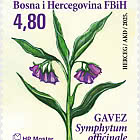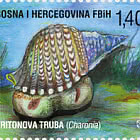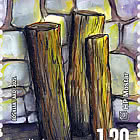GORICA, a village on the northern border of the field of Imotski, used to be a settlement as early as the Copper Age. The oldest settlement was situated on the hill Pit, and this is where the stone axe from the early Stone Age was found. In the Bronze Age a hill-fort settlement was built here which continued its existence into the Iron Age. The period of the Roman government left traces of houses, farm-buildings and public buildings at the foot of the hill Pit, as well as mosaics, weapons, jewellery, coins and other objects from the 1st to the 4th centuries. In the late ancient times the hill Pit became a fortified shelter. Yet, the most important finding from that period is, without doubt, the early Christian (late ancient) basilica, the study of which is currently underway. Up to now the southern and northern wings have been investigated, while the exploration of the central part is yet to be undertaken. The rounded apses in the eastern part complete all three parts of the construction. The southern part of the basilica consisted of a number of rooms designed for the needs of the Christian community. Under the flooring an arched crypt and another entrance to a similar crypt were discovered. The narthex, catechumenicon and baptistery were investigated in the northern part. The font for the baptismal water (the piscina) shows a cross-like form in the ground plan.
The central, unexplored part as yet, shows that a church was built here at the end of the 9th or at the beginning of the 10th century, in honour of ST. Stephan, the first martyr. With some lesser reconstructions and adaptations, the church was regularly used at least until the first half of the 17th century. Parts of its stones furniture, made by using the technique of the three-stand interlacery decoration, were found now in several places. A piece of this three-stand interlacery decoration was built into the apse of the new church that was built on the same site in 186. Beside its sacral, Šamatorje has had its sepulchral characteristics since the late ancient times. A burial-ground round the late ancient Croatian church developed into a large necropolis with standing tombstones in the14th and 15th centuries.


































